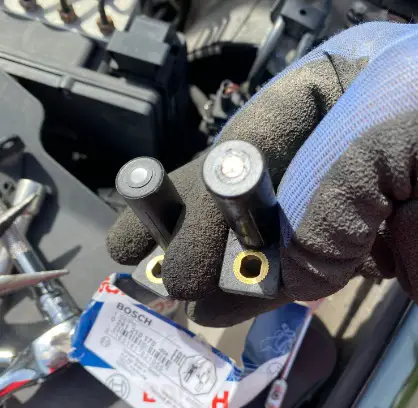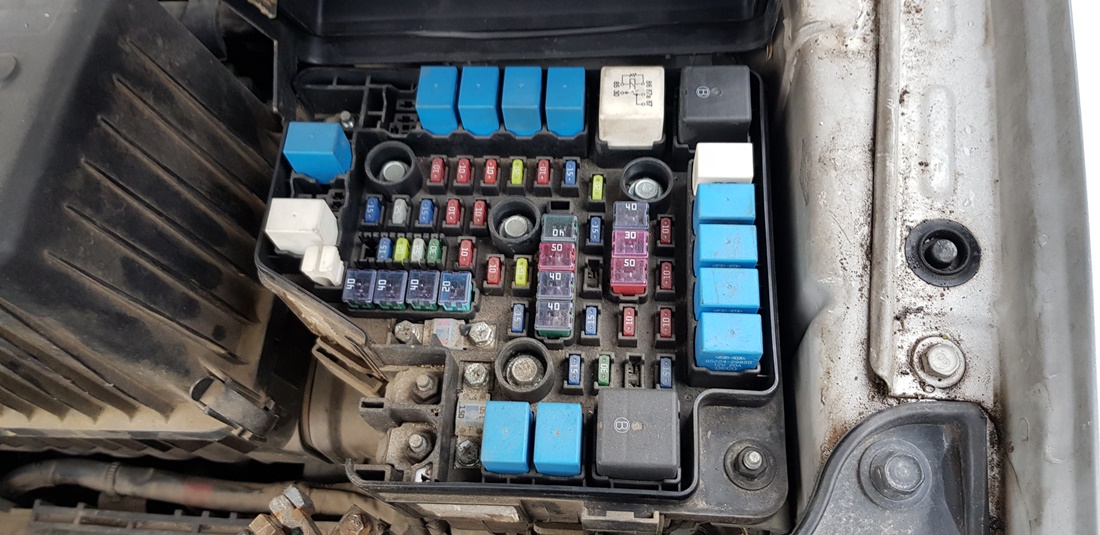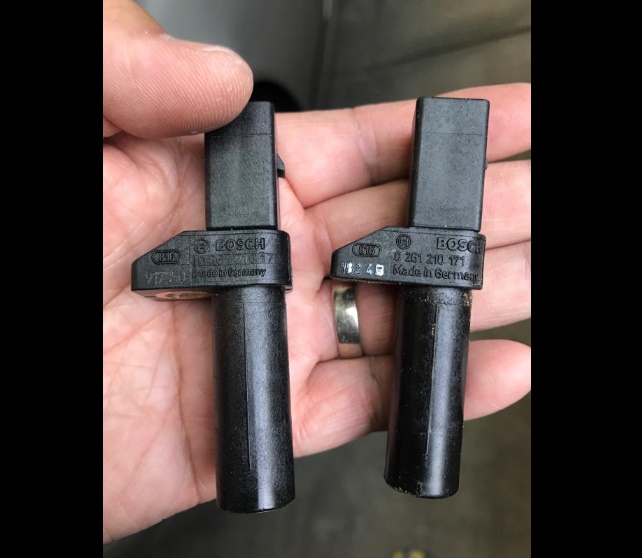There has been a lot of buzz on the internet about remote start and gas usage. Some people say that start uses less gas, and some folks say that remote start actually burns more gas.
Which one is it? Eager to find out more about this problem, I cleared my afternoon and did some research. Does the remote start use more gas? Read on to find more.
- Key Takeaway
- What Is a Remote Start In Cars
- Does Remote Start Use More Gas?
- Does Remote Start Use Gas or Battery?
- How Do Remote Starters Work
- Can Remote Start Damage Alternator
- FAQs
- Q: Can I use remote start if my car has a manual transmission?
- Q: Does remote start work with all car models?
- Q: Can I install remote start on my older car?
- Q: How far can I use remote start from?
- Q: Does remote start affect my car’s warranty?
- Q: Is remote start safe to use?
- Q: Can I use remote start with a hybrid or electric car?
- Q: Can I disable remote start if I don’t want to use it?
- In Conclusion
Key Takeaway
- A remote start in cars is a feature that allows you to start your vehicle’s engine from a distance, typically using a handheld fob or a smartphone app, without physically being inside the car.
- Remote start does not use more gas than a regular start; it’s the idling that can increase fuel consumption, but this typically uses less than one teaspoon of fuel per startup.
What Is a Remote Start In Cars
A remote start in cars is a feature that allows a vehicle owner to start the car’s engine without physically being inside the car.
This is typically done using a handheld fob or a smartphone app. The remote start feature is particularly useful in extreme weather conditions.
For instance, during cold winter days, you can start your car from inside your house, allowing the engine to warm up and the interior to heat before you get in.
Similarly, on hot summer days, you can start the car remotely to activate the air conditioning and cool down the car’s interior before you enter.
This feature not only adds convenience but can also extend the life of your vehicle by ensuring that the engine is at an optimal temperature before driving.
Does Remote Start Use More Gas?

Remote start does not inherently use more gas; it’s the idling associated with a remote start that can lead to increased fuel consumption.
However, this increase is minimal, typically burning less than one teaspoon of fuel per startup.
Therefore, while it’s true that a car will use up more fuel if it’s idling, the increase in fuel consumption due to using a remote start is not significant.
A remote starter is a device that will start your vehicle’s engine without the physical presence of your vehicle’s key. The benefits of a remote starter are all about comfort and convenience.
On a cold winter morning, a remote starter will warm the inside of your vehicle, defrost the windows, or melt any ice or snow on the roof of the car. In order to do this, a remote start module or system has to be installed in your vehicle.
Although the remote start is very convenient, your vehicle will actually burn more fuel while idling. It takes the same amount of fuel to start a car, regularly or with a remote start. However, it is idling that burns a lot of fuel. Let’s say you remote start your vehicle and you only intend to let it run for about a minute or just so the engine can warm up.
But then you get caught up with something in the house and you let your vehicle idle for about ten to twenty minutes. A standard four-cylinder engine will burn about 105 grams (0.027 gallons – 3.7 oz) of fuel every ten minutes or 0.630 grams/0.166 gallons for an hour.
Does Remote Start Use Gas or Battery?

The remote start uses both gas and battery to start up your vehicle. It is going to use the same amount of gas and electrical power as if you were starting the car with the key. The remote start technology consists of a start module or system that has to be installed in your vehicle. This module uses a technology called clone to mimic your vehicle’s key signal.
The remote start uses the same amount of gas and electrical power to start a vehicle as a regular start up.
Basically, the gas and electrical consumption required to start a vehicle are the same. The remote start only mimics the signal of your key. Therefore, it tricks your vehicle’s computer into thinking that the physical key is present.
The actual remote transmitter uses a battery. Depending on which remote start you will select for your vehicle, you will either get a USB rechargeable remote or one with batteries built into it.
On an average four-cylinder vehicle it takes about 250 amps to be drawn for three seconds and 1.2 milliliters of gas for a vehicle to start. This amount of electrical power and gas is required regardless if you use a remote start or physically start your vehicle with the original key. Once your vehicle is started, it will continue to idle with the presets that you have selected.
Most people use the remote start to warm up or cool down the vehicle’s cabin. I mean, it is the very reason why remote starters have been invented in the first place. You get up, it is freezing outside and you have to go to work. You remote start your vehicle and you select defrost. Easy peasy.
How Do Remote Starters Work
Remote starters work in a way that they mimic your actual vehicle’s key. They trick the vehicle into thinking that the original key is present in the vehicle. For this, the remote starter requires a control module to be installed into your vehicle and connected to the vehicle’s computer.
The control module also has a piece of hardware called a bypass module. It enables the starting of the vehicle without triggering any factory security systems that your vehicle might have.
So, with the hardware installed into your vehicle and connected to the main computer, the vehicle thinks that both you and the key are present in the vehicle. The car will start without no issues. However, the remote start has a safety feature. Let’s say that you start your vehicle from your bedroom window while you are still getting ready for work.
But, somehow, someone has seen that your vehicle is running and no one is inside. If someone gains access to your vehicle (which can be locked from the remote transmitter); the vehicle will shut down as soon as they press the gas pedal. This happens if the original key is not present in the vehicle.
There are a lot of remote starter packages on the market. Some of them are one-way which basically tells your car to start up and that’s it. You don’t get a confirmation that your vehicle has started. There are also two-way remote starters where you get a confirmation back that your vehicle is up and running.
Can Remote Start Damage Alternator

If your vehicle doesn’t have a factory remote start and you install an aftermarket model, if the installation of the remote start isn’t done correctly, it can cause damage to the alternator, the car’s battery, or the electrical system. However, a factory-installed remote start won’t cause any damage to the alternator.
Installing an aftermarket remote start on your vehicle requires connecting the control module of the remote start with your vehicle’s ignition wiring. There are a lot of wires that run through the wires that you will be working on. Installing a remote starter can be quite difficult and that is why it is not recommended as a DIY project.
If you or the person that you got to install the remote start on your vehicle misplaced even one wire or doesn’t wrap the exposed wires, this can most definitely lead to a short and could cause damage to the alternator, starter, and battery.
This is why you have to be very careful and always go to a professional. I know it can be a little bit pricier, but it is completely worth it Car Talk.
FAQs
Q: Can I use remote start if my car has a manual transmission?
A: Generally, remote start is not recommended for vehicles with manual transmissions. This is due to safety concerns, as leaving a manual transmission car in gear without a person in the driver’s seat can pose risks. It is best to consult your vehicle’s manual or contact the manufacturer to determine if remote start is compatible with your specific model.
Q: Does remote start work with all car models?
A: Remote start is available as a feature in many modern car models. However, the availability may vary depending on the vehicle’s make, model, and year. It is advisable to check with your car manufacturer or dealer to confirm if remote start is compatible with your specific car model.
Q: Can I install remote start on my older car?
A: It is possible to install remote start on older vehicles that do not come with this feature from the factory. There are aftermarket remote start kits available that can be installed by a professional. However, the installation process and compatibility with older car models may vary. It is recommended to consult with an experienced installer or contact the manufacturer of the remote start kit for more information.
Q: How far can I use remote start from?
A: The range for remote start can vary depending on the car and the remote control or mobile app you are using. Generally, most remote start systems allow you to start your vehicle within a range of 100 to 300 feet. However, it is important to note that obstacles such as walls, buildings, or other obstructions can reduce the effective range of the remote start system.
Q: Does remote start affect my car’s warranty?
A: Remote start installation itself should not void your car’s warranty. However, any damages caused by improper installation or if the remote start system interferes with the car’s original electrical or mechanical components, it could potentially void the warranty. It is recommended to have a remote start installed by a professional to avoid any potential warranty issues.
Q: Is remote start safe to use?
A: Remote start is generally safe to use when installed and operated properly. However, it is important to exercise caution and follow safety guidelines. Make sure the vehicle is parked in a safe location and there are no obstacles or hazards nearby. Additionally, be aware of any local regulations or restrictions regarding remote start usage in your area.
Q: Can I use remote start with a hybrid or electric car?
A: It depends on the specific hybrid or electric car model. While some hybrid or electric vehicles are equipped with remote start functionality, others may not have this feature. It is best to refer to the car’s manual or contact the manufacturer to verify if remote start is available and compatible with your specific hybrid or electric car.
Q: Can I disable remote start if I don’t want to use it?
A: In most cases, remote start can be disabled or turned off by following the instructions provided in the vehicle’s manual. The process may involve accessing the car’s settings or using the remote control or mobile app to disable the feature. If you are unsure of how to disable remote start, it is recommended to consult the car’s manual or contact the manufacturer for guidance.
In Conclusion
While it’s true that idling can burn more fuel, the amount used by a remote start system is minimal, often less than one teaspoon per startup.
Moreover, most cars warm up within 3 to 5 minutes, limiting the amount of fuel used during this period.




